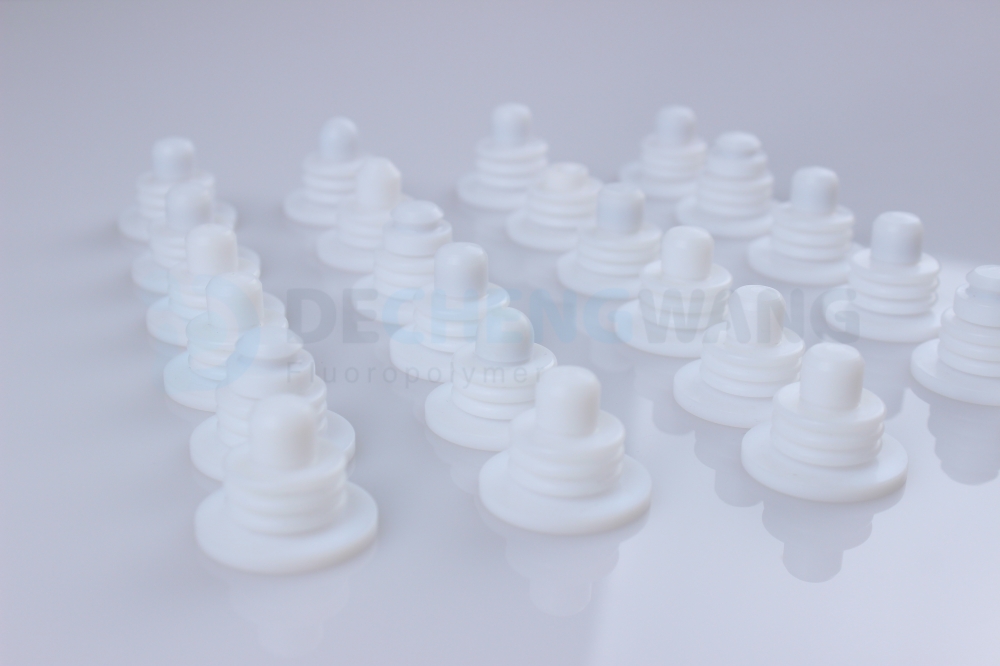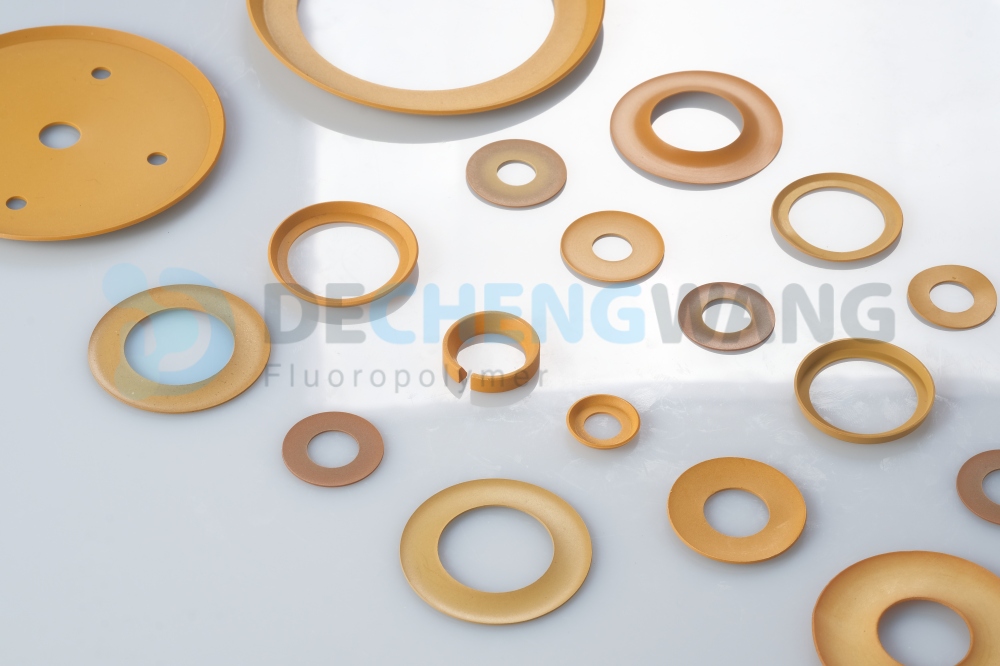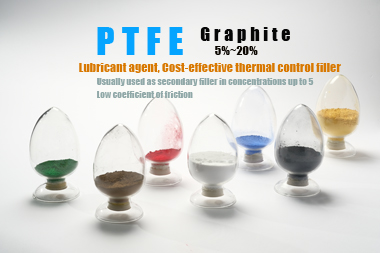Many manufacturing industries tend to use strong metals and alloys to make machine parts that can withstand constant wear and tear and high temperature. However, those parts made of metal have their underlying drawbacks — Hence, the need to have an alternative form that offers better resistance.
Heat-resistant plastics are innovative plastics that can be used to make industrial parts that avoid the disadvantages of metal parts.
In this article, we will explore various heat-resistant plastics, alongside their characteristics when exposed to high temperatures or unfavorable conditions, allowing you to make the best choice.
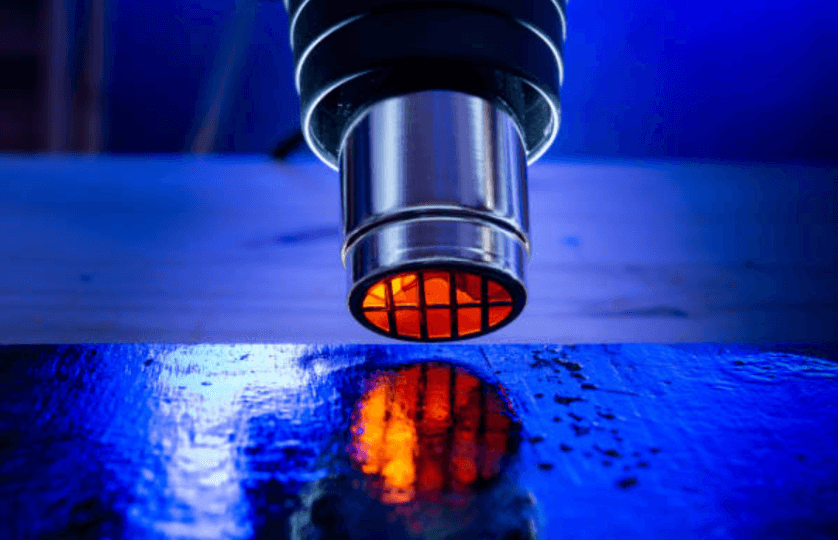
How to Describe and Classify Heat Resistant Plastics
To describe heat-resistant plastic, simply say they are plastics that can tolerate heat to a large extent without getting damaged. They can be classified based on their heat-resistant properties, and the category of thermoplastic they belong to.
Heat-Resistant Properties of Heat-Resistant Plastics
Heat-resistant plastics can be described based on how they are affected by exposure to heat and what effects heat has on them.
- Melting Point
The melting point of plastic is the maximum temperature the plastic can bear before it turns into a liquid form. Heat-resistant plastics have a high melting point usually over 220°C.
- Heat Deflection Temperature
The maximum temperature a plastic can contain without deforming when loaded is known as the Heat deflection temperature (HDT). If the temperature range is exceeded, the plastic will deform or melt.
High temp plastics have a high heat deflection temperature ranging between 160°C – 340°C depending on the plastic type.
- Continuous Operating Temperature
While heat deflection is the point where the plastic starts deforming, continuous operating temperature is the temperature limit where the plastic can function properly and reliably over a period of time. COT of heat-resistant plastics varies, but it can go as high as 160°C – 350°C depending on the plastic.
- Glass Transition Temperature
The glass transition temperature (Tg) refers to the temperature where a plastic’s ductile ability changes to brittleness. Glass transition temperature is similar to the melting point. Plastics at room temperature as solid, but at the glass transition temperature, they become soft and flexible.
- Flame Resistance
After conducting a standard flame test on plastics, heat-resistant plastics have a range of V-0, while every other plastic type has a varied range.
| Plastic Type | Melting Point | Heat Deflection Temperature | Continuous Operating Temperature | Glass Transition Temperature | Flame Resistance |
| Polyphenylene Sulfide (PPS) | 280-300°C (536-572°F) | 200-260°C (392-500°F) | 200-240°C (392-464°F) | 85-110°C (185-230°F) | UL 94 V-0 |
| Polyetheretherketone (PEEK) | 334-343°C (633-649°F) | 150-250°C (302-482°F) | 250-260°C (482-500°F) | 143°C (289°F) | UL 94 V-0 |
| Polyimide (PI) | 400-450°C (752-842°F) | 200-340°C (392-644°F) | 300-350°C (572-662°F) | 260-340°C (500-644°F) | UL 94 V-0 |
| Polyetherimide (PEI) | 220-230°C (428-446°F) | 160-216°C (320-421°F) | 170-200°C (338-392°F) | 215-217°C (419-423°F) | UL 94 V-0 |
| Polyamide-imide (PAI) | 320-330°C (608-626°F) | 200-275°C (392-527°F) | 250-275°C (482-527°F) | 245°C (473°F) | UL 94 V-0 |
| Liquid Crystal Polymer (LCP) | 320-360°C (608-680°F) | 180-300°C (356-572°F) | 200-300°C (392-572°F) | 155-350°C (311-662°F) | UL 94 V-0 |
Two Categories of Thermoplastics: Semicrystalline & Amorphous
Thermoplastics can be grouped into two categories based on their molecular structure arrangement and stability. These categories are:
- Semi-Crystalline Thermoplastics
A semi-crystalline thermoplastic has a tightly packed and orderly molecular structural arrangement. Because of their molecular arrangement, they have high strength and can withstand extreme wear and tear.
Examples of semi-crystalline thermoplastics are Polybutylene terephthalate (PBT), Polyethylene terephthalate (PET), and Polyetheretherketone (PEEK).
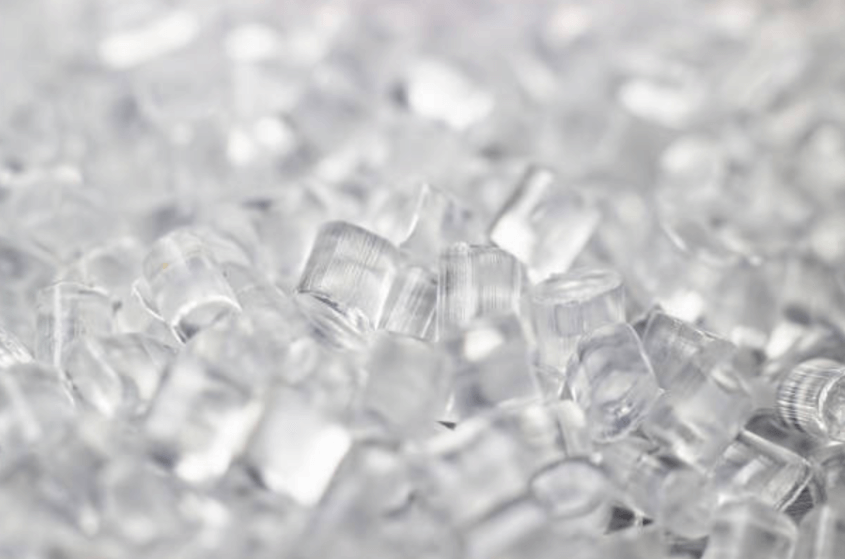
- Amorphous Thermoplastics
Amorphous thermoplastics are nothing like semi-crystalline thermoplastics. They lack a defined shape or size. Amorphous thermoplastics have a randomly ordered and lightly packed molecular structure.
Examples of amorphous thermoplastics are Polycarbonate (PC), Polysulfone (PSU), Polyvinyl chloride (PVC), Acrylonitrile butadiene styrene (ABS), and Polyetherimide (PEI).
- The Difference Between Semicrystalline and Amorphous
The defining characteristic that distinguishes a semi-crystalline from an amorphous thermoplastic is its molecular structure.
Semi-crystalline polymers are tightly packed and bounded by strong electrons, which makes them difficult to melt while amorphous polymers are loosely packed and have a lower melting point.
Top 5 Heat Resistant Plastics
There are different types of heat-resistant plastics that have a wide range of applications in different industries. The top 5 heat-resistant plastics are PEEk, PTFE, PEI, PBI, and PAI.
Polyether ether ketone (PEEK)
PEEK is a semi-crystalline thermoplastic known for its ability to withstand mechanical, chemical, and thermal resistance. DCW offers numerous PEEK components ranging from Ball valve seats, O-rings, Guide rings, Insulators, Labware, Seals, and Bushings to production industries in need.
Also, DCW has other modified variations of PEEK such as the PEEK-450GL30 (PEEK with 30% Glass fiber) and PEEK-450CA30 (PEEK with 30% Carbon).
| DCW’s PEEK products | Ball Valves Seats | O-Rings | Guide Rings | Insulators | Labware | Seals | Bushings |
| Polyether ether ketone (PEEK) | √ | √ | √ | √ | √ | √ | √ |
Advantage
- Strong And Adaptable to Harsh Environments: PEEK is a strong plastic that is suitable for use in harsh environments. It can adapt to any time of use, in any weather condition.
- Highest Tensile and Flexural Strength: PEEK has a tensile strength range of 80 to 110 MPa and a flexural strength of 120 to 160 MPa.
- Easy Injection Molding Machining Capabilities: PEEK can be easily machined through injection molding. Our high-performance injection molding machines help to mold PEEK into whatever shape and form.
- Compatible With CNC Machining: PEEK is compatible with CNC machining. Our high-tech CNC machine helps to create a more accurate PEEK design.
Disadvantage
- Susceptibility to UV Light and Certain Acids: Even though we know PEEK for its excellent chemical resistance, it does not resist UV light and certain acids. Excessive exposure to UV lights can cause PEEK to degrade in color and deteriorate in quality.
Polytetrafluoroethylene (PTFE)
Polytetrafluoroethylene (PTFE) has a wide range of applications in the production of electrical materials, seals, and even cookware. DCW produces high-grade modified PTFE with 15-25% of glass to produce new capabilities and features such as longer flexural strength and better resistance.
| Bellows | Ball Valves Seats | O-Rings | Guide Rings | Insulators | Labware | Seals | Bushings | |
| Polytetrafluoroethylene (PTFE) | √ | √ | √ | √ | √ | √ | √ | √ |
Advantage
Here are some of the pros of the PTFE plastic polymer:
- High Flexural Strength: PTFE has high flexural strength. All thanks to its molecular structure that allows it to remain in one piece even under strenuous conditions.
- Adequate Weathering Resistance: PTFE is resistant to extreme weather conditions.
- Good Electrical Insulating Power in Both Hot and Wet Environments: PTFE shows exceptional electrical insulating power, this is why it is widely used to manufacture electrical equipment.
Disadvantage
Here are some drawbacks of PTFE
- Inferior to Comparable Plastics at Room Temperature: Many plastics retain their features at room temperature. However, PTFE looks inferior at room temperature.
- Sensitive to Creep, Abrasion, and Radiation: PTFE is sensitive to creep, abrasion, and radiation under high temperatures and heavy loads.
- It can be Toxic: Although PTFE is an FDA-certified food-contact plastic, it can be poisonous when exposed to extremely high temperatures.
- Fairly Expensive to Process: PTFE requires a complex production process which increases its cost of production, a little more than the other thermoplastics.
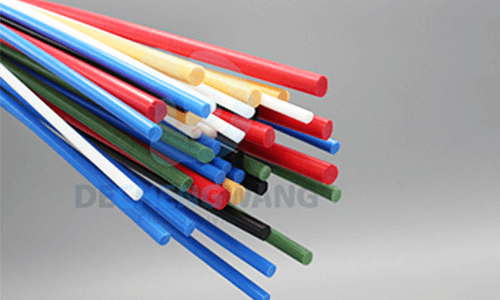
Polyetherimide (PEI)
PEI is a high-performance thermoplastic that has various applications in different industries. They maintain their strength and stability even in high temperatures.
Advantage
- High-Performance Thermoplastics: PEI is a high-performance thermoplastic with high tensile strength and resistance.
- Perform Well Against Fuels and Coolants: PEI’s chemical inertness allows it to perform well against fuels and coolants.
- Highest Dielectric Strength: When compared to other thermoplastics, PEI has the highest dielectric strength. This explains why PEI is a good insulator.
Disadvantage
- Easy Crack in the Presence of Polar Chlorinated Solvents: PEI can easily crack or experience degradation in the presence of polar chlorinated solvents like trichloroethylene and methylene chloride.
- Relatively Expensive: The production cost of PEI is quite expensive, which makes PEI products equally expensive.
- Market Demand and Availability: Unlike PEEK and PTFE, the demand for PEI is low. And like the law of economics, when the demand is low the supply becomes low as well.
Polybenzimidazole (PBI)
Polybenzimidazole is a thermoplastic belonging to the class of aromatic compounds with a highly rigid structure. It is inert and can withstand high temperatures, thus, it is often used in liquid and gas purification and separation. Here are the following pros and cons of PBI;
Advantage
- High Stability: PBI’s rigid molecular structure is responsible for its high stability, and high tensile strength.
- Extreme Heat Resistance Highest of any Thermoplastic on the Market Today: No thermoplastic comes close to the heat resistance of PBI. PBI can withstand temperatures as high as 450-500°C which is by far more than the other thermoplastics.
- Fibers Have No Melting Point- Don’t Burn or Stick to Other Plastics: As mentioned above, PBI has high heat resistance. They have no melting point and thus, do not stick to other plastics.
Disadvantage
- Expensive and Difficult to Manufacture: You can guess from PBI’s pros that they will cost a whole lot and require difficult techniques to manufacture them.
- High Notch Sensitivity: PBI can be sensitive to high notches and their strength reduces significantly if there is a concentration of stress.
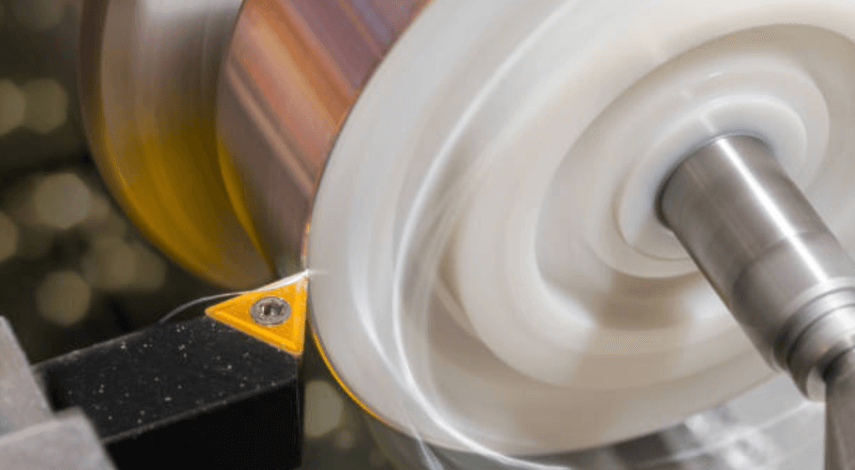
Polyamide-imide (PAI)
Polyamide-imide (PAI) is a thermoplastic with combined properties of polyamides and imides. This combination is responsible for its high-performance features like resistance and durability. This high temp plastic is often used in the production of materials that will be exposed to harsh conditions.
Advantage
- Combines Chemical, Corrosion, and Heat Resistance: PAI is highly resistant to chemicals, corrosion, and heat.
- PAI Parts Show High Mechanical Loading Capacity: This high temp plastic exhibits strength, resistance, and high mechanical loading capacity, making it an excellent thermoplastic for the production of durable components.
- High Tensile and Compressive Strength: PAI possesses properties like high tensile and compressive strength, thus, it can maintain its original size and resist degradation even when exposed to high pressure.
Disadvantage
- Expensive: The production process of PAI is expensive because the raw materials are not easily accessible and are pricey.
Application of Heat-Resistant Plastics in Different Industries
Heat-resistant plastics have countless applications in almost every industry in the world. We almost cannot do without these plastics because they are beneficial to us. All their properties can be harnessed to meet different needs. And when they are not up to requirements, they can be modified.
Application of Heat Resistant Plastics in the Chemical Industry
Heat-resistant plastics have a wide range of applications in the chemical industry because of their distinct properties. They are used for slide bearings, rollers, thrust washers, piston rings, and seals.
The Pros of Using Heat Resistant Plastics
Here are the advantages of using high-temperature plastics;
- Withstand Sliding Friction, High Temperatures: heat resistant plastics have the ability to withstand high temperatures and sliding friction because of their molecular structures.
- Good Chemical Resistance: These thermoplastics are chemically inert and resist any reaction with chemicals be it acids or bases.
- Ease of Processing and Lightness: Processing high-temperature plastics is relatively easier than processing metals and alloys. Alongside, the resulting products are light and easy to transport.
Commonly Used Thermoplastic Types in Chemical Industry
The commonly used thermoplastics in the chemical industry are; polytetrafluoroethylene (PTFE), perfluoro alkoxy (PFA), polyimide (PI), and polyphenylene sulfide (PPS).
Application Example in Chemical Industry
PTFE and polyetheretherketone (PEEK) are used in the production of gaskets and seals for chemical equipment. Polypropylene (PP), and polyethylene (PE) are often used in the production of chemical-resistant containers, beakers, flasks, and trays.
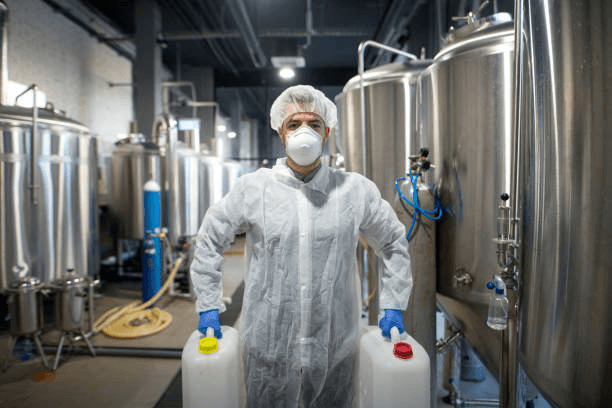
Application of Heat Resistant Plastics in the Food and Beverage Industry
Heat resistant plastics have a wide range of applications in the food and beverage industry because of their distinct properties. They are used for PEEK Gear, PEEK Part, PTFE Bellows, PTFE Diaphragms, and all other food packaging and processing materials.
The Pros of Using Heat Resistant Plastics
Here are the advantages of using high-temperature plastics;
- Low-Friction, Good Wear: They have a low coefficient of friction which give them adequate resistance from wear.
- Chemical and Stain Resistance: heat resistant plastics are not only resistant to heat but also to chemicals, solvents, acids, bases, and water vapors.
- Temperature Resistance: They are particularly useful for packaging that requires constant heating or microwaving because of their temperature resistance.
- FDA Standards: PTFE and PEEK are approved and certified by the FDA to come in contact with food. They do not contaminate the food’s quality.
Commonly Used Thermoplastic Types in Food and Beverage Industry
The commonly used thermoplastics in the food and beverage industry are PEEK, HDPE, PET, LDPE, PP.
Application Example in Food and Beverage Industry
They are used in key aspects of the food and beverage industry for the processing and packaging of milk, juice, beverages, and other foods and condiments
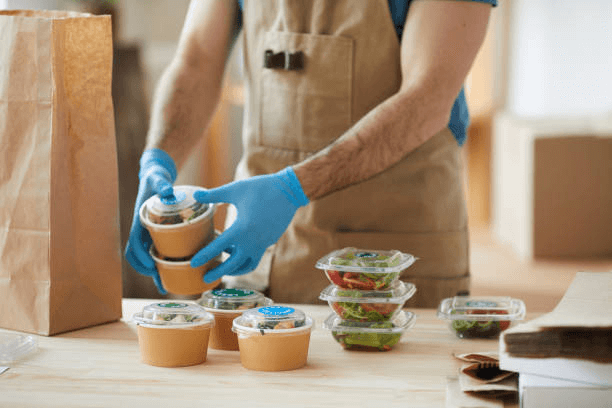
Application of Heat Resistant Plastics in the Aerospace Industry
Common applications of heat-resistant plastics in the aerospace industry include; Wire Insulation, Pump Casings, and Impellers.
The Pros of Using Heat Resistant Plastics
Here are the advantages of using high-temperature plastics;
- Lightweight: heat resistant plastics are light in weight compared to alloys and metals, this is particularly useful in the production of aircraft where weight is an important factor to consider
- Easy Process: Heat-resistant plastics are easy to process, making them suitable for use in aerospace.
Commonly Used Thermoplastic Types in Aerospace Industry
Aerospace-grade polymers like PEEK, PEI, and PSU offer a dependable method of weight reduction. They are suitable for the construction of structural elements of airplanes.
Application Example in Aerospace Industry
The dimensional and density stability makes these plastics a preferred material for interior, mechanical, and external components of aircraft.
Aerospace engineering can depend on thermoplastics’ ability to be machined to extremely tight tolerances of up to 0.002mm by undergoing tough processes like press forming, quick thermoforming, and autoclave processing.
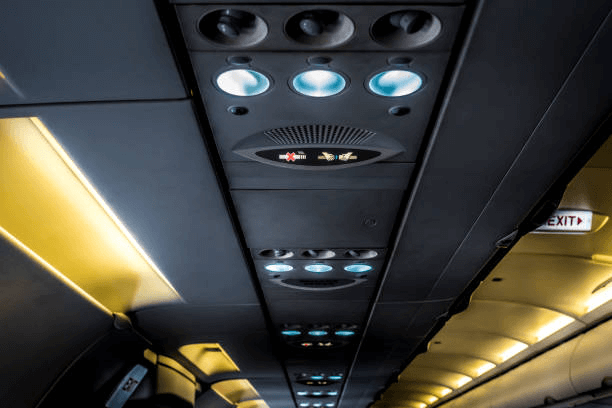
Application of Heat Resistant Plastics in the Automotive Industry
Common applications of heat-resistant plastics in the automotive industry. Including piston components, seals, washers, bearings, and interior and exterior parts of automobiles.
The Pros of Using Heat Resistant Plastics
Here are the advantages of using high-temperature plastics;
- Lightness And Greater Fuel Efficiency: the lightweight of heat-resistant plastics makes them more fuel efficient than metals when used on automobiles.
- Greater Design Flexibility: There is no limit to what suitable automotive design you can achieve with heat-resistant plastics.
- Reduced Development Time: Producing high temp plastics require a lesser amount of time than refining metals, cutting them, and joining them into the desired components.
- Lower Assembly Costs: Using plastics results in savings of up to 20% cost of assembling metal.
Commonly Used Thermoplastic Types in the Automotive Industry
The commonly used thermoplastics in the automotive industry are PEEK, PEI, and PPS.
Application Example in Automotive Industry
Modern car parts like gears, hot fuel systems, fuel reservoirs, ignition modules, oil screens, bearings, pistons, pumps, valves, and air manifolds can be made from high-temperature-resistant plastics.
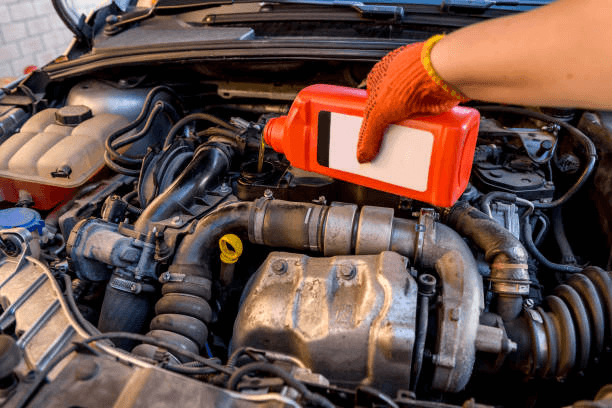
Application of Heat Resistant Plastics in the Electronics and Semiconductors Industry
Heat resistant plastics are widely used in the electronics and semiconductors industry for PTFE insulators, bushings, insulators, rings, and seals.
The Pros of Using Heat Resistant Plastics
Here are the advantages of using high-temperature plastics;
- Meet More Stringent Technical Specifications: heat resistant plastics allows manufacturers to meet stringent technical specifications of electronic components due to their easy moldability and malleability.
- Thin-Wall Design To Reduce Cost: High temp plastics can create thin-wall designs that help in reducing the cost of material used, impacting the overall cost of production.
- Low Warpage: Since heat-resistant plastics are easily malleable, it reduces the chances of warpage, that is distortion or degradation during processing and packaging.
Commonly Used Thermoplastic Types in Electronics and Semiconductors Industry
The commonly used thermoplastics in electronics and semiconductor industries are; PEEK, PAI, PEI, and PPS.
Application Example in Electronics and Semiconductors Industry
They are used to manufacture different components of electrical appliances and semiconductors Like PTFE insulators, Bushings, Insulators, Rings, and Seals.
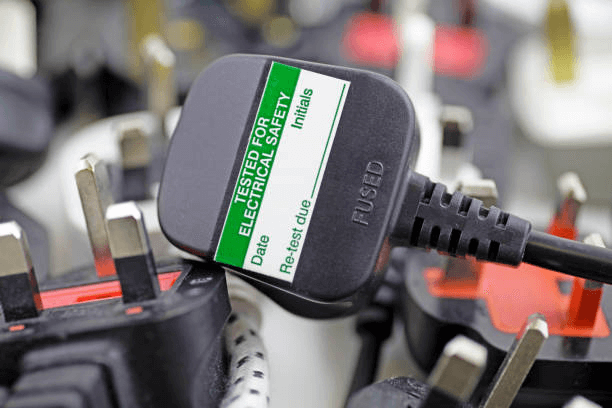
Application of Heat Resistant Plastics in the Mechanical Engineering Industry
Heat resistant plastics are widely used in the mechanical engineering industry for different applications, such as; ball valve seats, bellows, bushing, and insulators.
The Pros of Using Heat Resistant Plastics
Here are the advantages of using high-temperature plastics;
- Greater Design Flexibility: In the chemical industry, high temp plastic design flexibility helps the industry to achieve whatever design they want.
- Excellent Cost/Performance: The use of high-performance polymers reduces costs and results in more cost-effective design and transportation.
Commonly Used Thermoplastic Types in Mechanical Engineering Industry
Commonly used thermoplastics in the mechanical engineering industry include; PTFE, PEI, PEEK, PS, and LCP.
Application Example in Mechanical Engineering Industry
Many industrial cams, gears, and couplings can be made from heat-resistant plastics polymers PTFE and PEEK. Also, they can be used for making ball valve seats, bellows, bushings, and insulators.
Application of Heat Resistant Plastics in the Oil and Gas Industry
The Oil and gas industry relies on heat-resistant plastics because of their lightweight, temperature range, and cost efficiency. They are used for the following; ball valve seats, rings, seals, and pipes.
The Pros of Using Heat Resistant Plastics
Here are the advantages of using high-temperature plastics;
- Light Weight: Compared to metal or alloy components, high-heat plastics are lighter in weight, allowing for better functionality in machine parts.
- Cost-Efficiency: heat resistant plastics are preferred across many oil and gas industries because of their lower cost and ease of production.
- Broad Temperature Range: High temp plastics can withstand both freezing conditions and hot temperatures as high as 500°C.
- Resistance To Heat, Steam, Chemicals, And Corrosion: They are highly resistant to heat, making them suitable for use in the oil and gas industry.
Commonly Used Thermoplastic Types in Oil and Gas Industry
The oil and gas industry uses virtually every thermoplastic mentioned above. Polyamide (PA), Polyetheretherketone (PEEK), Polyetherimide (PEI), and Polytetrafluoroethylene (PTFE).
Application Example in the Oil and Gas Industry
In the oil and gas industry, Polyimide and other thermoplastics are used in the production of precision engine components for refineries. PTFE on the other hand is used in the production of drilling tools, seals, and valve seats because of its exceptional stability and low friction.
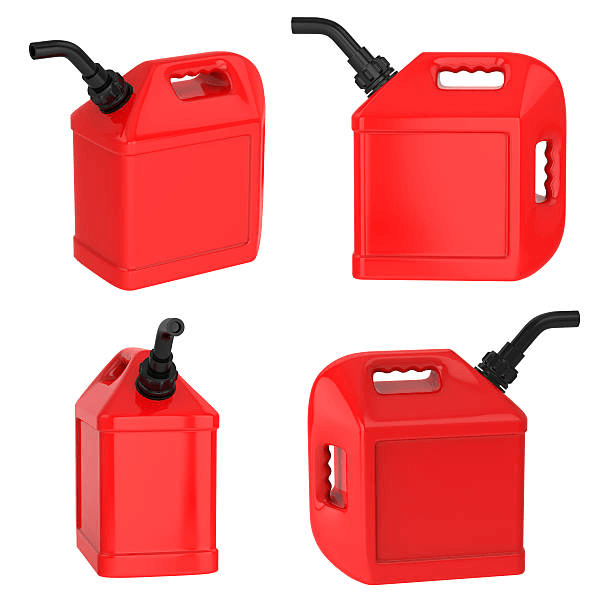
DCW: A Professional Heat Resistant Products Provider
Whatever you need a heat-resistant plastic for, be sure you can get a solution from us.
DCW offers a broad selection of compression-molded and precision-machined components made from a variety of PEEK and PTFE compounds and engineering plastic materials. When it comes to heat-resistant plastics, we are the best at what we do.
In addition, we provide quality assurance and satisfy the needs of made-to-order OEM industrial components. Here’s why you should choose us:
Serving a Wide Range of Industries
Whatever industry you can think of, our products are useful there. We serve a number of industries ranging from food and beverage, electrical and semiconductors, oil and gas, and automotive and aerospace.
Custom PTFE Compounds
We create fluoropolymer parts to assure maximum purity and corrosion resistance. All our custom PTFE compounds are available as well as high quality.
Quality Management
DCW is an ISO 9001 and IATF 16949 registered firm. With this certification, our customers are assured of quality services and management at all times.
Conclusion
The application of heat-resistant plastics cuts across all industries for different functions. Their different properties and compositions make them suitable for different applications.
While it may be hard to know which of these plastic polymers is good for your project, DCW is available to help you choose.
Reach out to us today to get your quotations.

